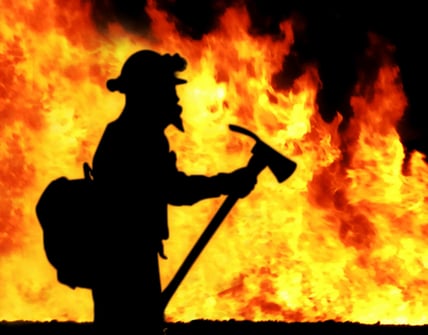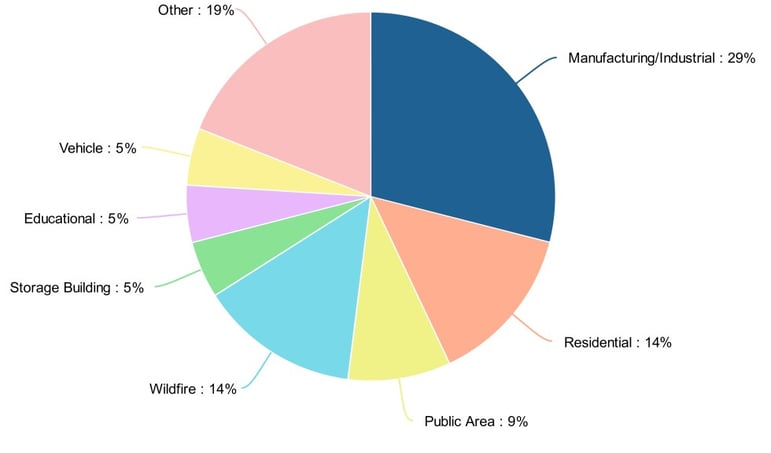 While wildfires continue to ravage California, Texas, and other states, the news reports always mention the scale of the fire by the cost of the damage it has done. While these are the fires that get the most news attention, there are many other fires and explosions that are even more costly to manage.
While wildfires continue to ravage California, Texas, and other states, the news reports always mention the scale of the fire by the cost of the damage it has done. While these are the fires that get the most news attention, there are many other fires and explosions that are even more costly to manage.
The NFPA puts out a report each year on the large loss fires and explosions that occur in the United States during the previous year, which lets you see exactly what types of fires create the costliest damage.
The NFPA defines a large loss fire or explosion as one that caused damage of $10 million or more. Out of the 1,240,000 fires that U.S. fire departments responded to in 2013, only 21 of them reached the level of a large loss fire. These 21 fires and explosions caused almost $845 million in immediate loss; this number doesn’t take into account losses caused by lost production or lawsuits.
These large loss fires made up just 0.002% of all fires, yet were 7.3% of the total cost of fires for the year. These 21 fires cost more than just money though; 9 firefighters and 8 civilians were killed, and 18 firefighters and 278 civilians were injured by them.
The data from the NFPA report shows that wildfires are tied with residential fires in 3rd place for costing the most in damage from these large loss fires. The largest group in terms of cost for large loss fires and explosions is the manufacturing and industrial industry, which made up almost 30% of the total cost.
This just shows the importance that NFPA and OSHA requirements for fire and explosion prevention and control are for manufacturing plants. Many plants skimp on the efforts needed to fully comply with the safety code requirements, or cut corners in their safety practices.
When these safety measures aren’t met the end result is a large loss fire or explosion that not only damages or destroys the building and equipment, but stops production and sales and creates lawsuits for workers. These industrial fires and explosions end up being more costly than large loss wildfires and residential fires combined.
This number needs to come down, but the only way this can happen is if proper safety precautions are used and fire codes are followed.
Want to make sure your building doesn’t add to the latest list of large loss fires?


